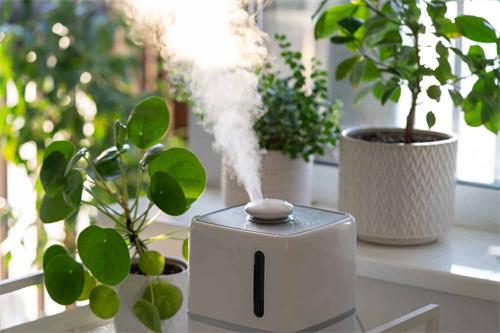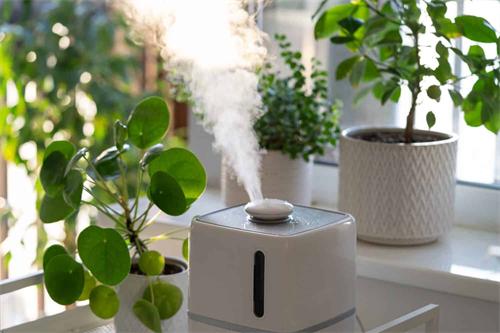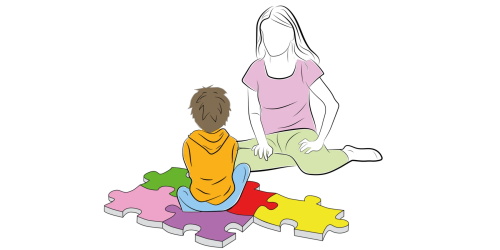Mist-Free Moisture: Why Cold Evaporative Humidifiers Are Best for Baby Rooms

When winter arrives or during dry seasons, many households begin to notice the indoor air becoming increasingly dry—especially when the air conditioner is running frequently. While adults might just experience dry lips or tight skin, for babies, such a dry environment can cause more significant discomfort. That’s why a suitable humidifier has become a staple appliance in many homes, particularly in baby rooms.
Why Do Babies Need Humidifiers More?
A baby's respiratory system is still developing and is especially sensitive to humidity levels. When the air is too dry, babies can experience nasal dryness, difficulty breathing, and even disturbed sleep. In addition, a baby’s skin is only one-tenth the thickness of an adult’s, making it extremely delicate and prone to moisture loss. If the humidity is too low, the skin may become dry, flaky, or even cracked—sometimes leading to painful irritation.
This is especially true during air-conditioned seasons when indoor air tends to be drier. Staying in such an environment for extended periods can negatively impact a baby’s skin and respiratory health. That’s why it’s recommended to maintain indoor humidity between 40% and 60%, which helps ease dryness and protect the baby’s overall well-being.
Humidifier Types Compared: Why Cold Evaporation is Ideal for Babies
There are several types of humidifiers on the market, including ultrasonic, warm steam, and cold evaporative models. While all of them aim to increase humidity, their mechanisms, safety levels, and suitability for babies vary.
1. Ultrasonic Humidifier (Mist Type)
This is the most common type, which uses high-frequency vibrations to turn water into visible mist. However, it shouldn't be used with tap water, as it doesn't produce true steam but rather micro water droplets. These droplets may carry impurities like bacteria, minerals, and other particles from the water, which can be inhaled into the lungs—potentially causing “humidifier lung” or respiratory irritation.
Moreover, most ultrasonic models don’t have built-in sterilization features, so if not cleaned regularly, they can become breeding grounds for bacteria. These potential health risks make them less ideal for babies.
2. Warm Steam Humidifier (Boiling Type)
These work by boiling water to create steam, which theoretically kills bacteria in the process. While effective at disinfecting, they tend to produce bubbling sounds that may disturb a sleeping baby. Additionally, since the unit operates at high temperatures, it poses a burn or fire risk if it runs dry or is knocked over. This makes them unsuitable for households with active or curious toddlers.
3. Cold Evaporative Humidifier (Mist-Free Type) – Top Recommendation
Cold evaporative humidifiers work by drawing air through a damp filter using a fan. As the air passes through, it picks up moisture and gently releases it into the environment—without creating visible mist. This natural evaporation method mimics the way nature humidifies the air and is often called a “mist-free” humidifier.
Why is it ideal for baby rooms?
- High safety: No heat involved—no risk of burns or overheating.
- Tap water friendly: You can use regular tap water without worrying about impurities in the mist.
- No wet floors: The moisture is dispersed evenly, so floors and walls won’t get damp.
- Quiet operation: Very low noise levels—perfect for a peaceful nap time.
- Healthier environment: Releases only pure water vapor, reducing the risk of airborne bacteria.
Choosing the Right Humidifier Size for Your Room
When buying a humidifier, don’t overlook the importance of its “humidification rate” (measured in mL/h). A good rule of thumb is to match the output to the room size. For example, a humidifier rated at 200 mL/h is suitable for rooms under 20㎡, while 400 mL/h models are better for medium-sized children’s rooms or bedrooms.
Maintenance Costs and Tips
- Filter replacement: Most mist-free models require periodic filter changes—frequency depends on usage.
- Cleaning water scale: Since tap water is commonly used, minerals like calcium and magnesium can build up. Use citric acid cleaners to descale the water tank regularly.
- Warranty check: Look for models with at least a two-year full machine warranty—avoid units with only a one-year guarantee to ensure better long-term reliability.
Recommended for you:







